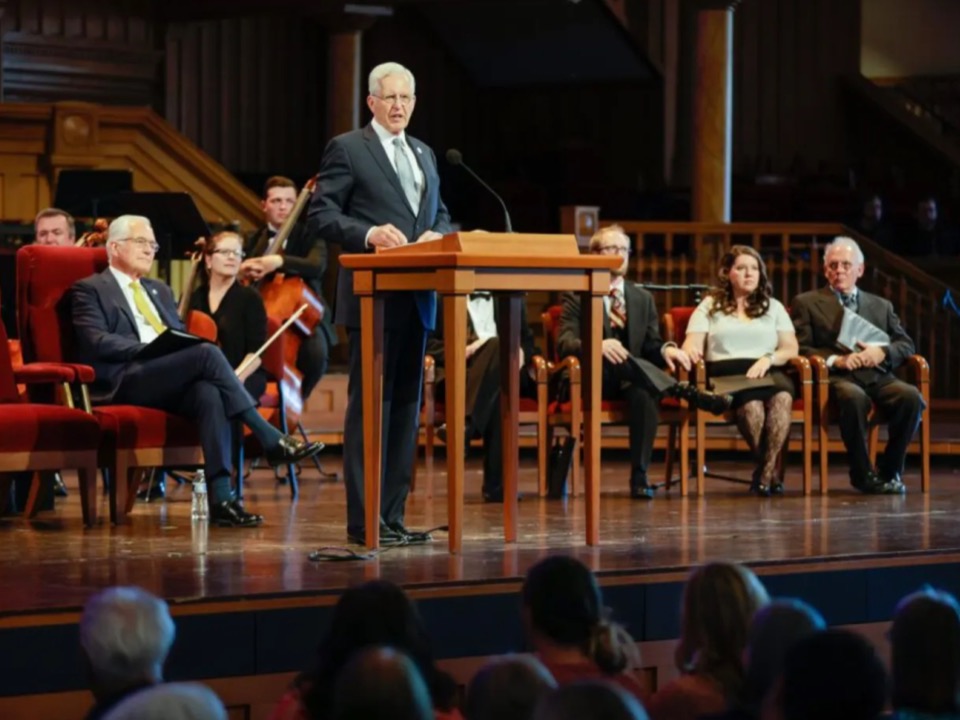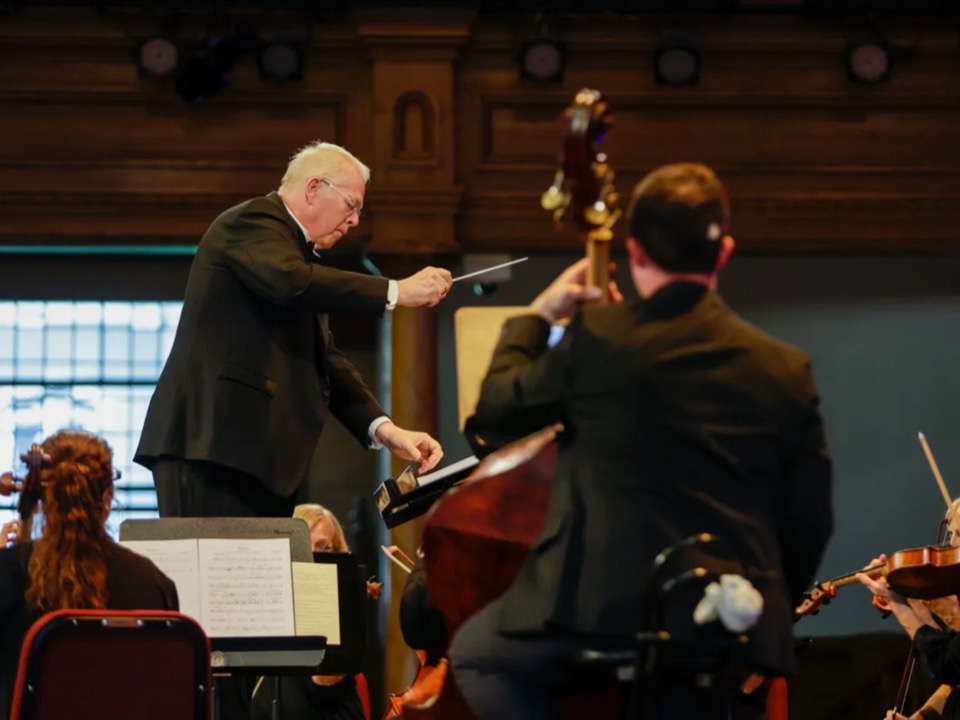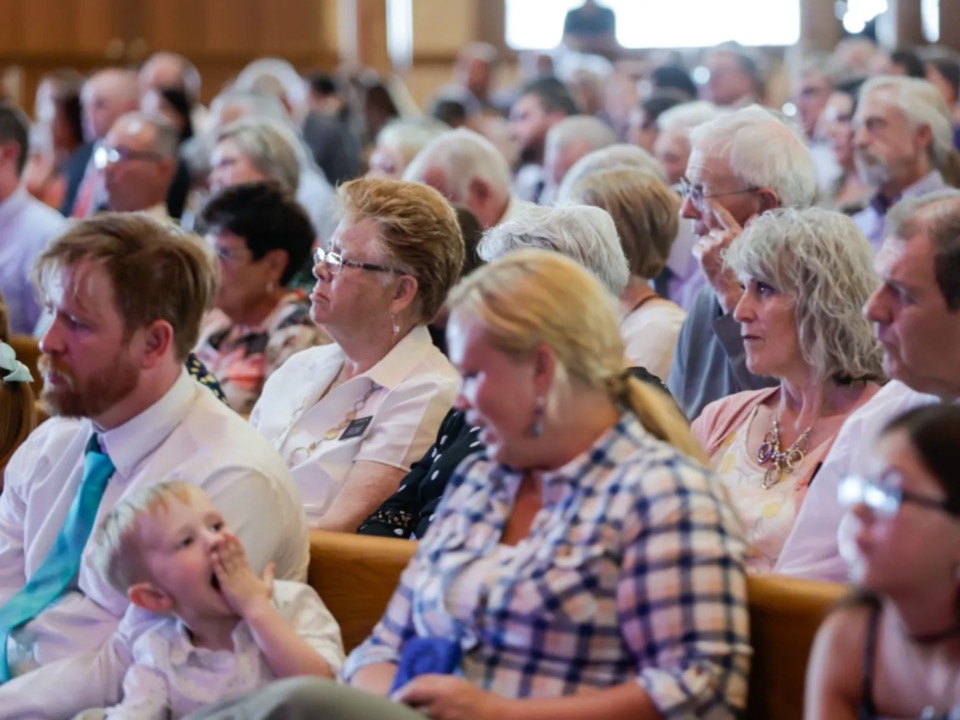
This story appears here courtesy of TheChurchNews.com. It is not for use by other media.
By Ryan Jensen, Church News
Closing the Pioneer Day festivities on Sunday, July 24, in the Tabernacle on Temple Square, Elder D. Todd Christofferson of the Quorum of the Twelve Apostles spoke of the sacrifices made by and blessings brought because of the Mormon Battalion.
For one calendar year prior to the Saints’ arrival in the Salt Lake Valley in July 1847, the Mormon Battalion marched nearly 2,000 miles to California during a time that Elder Christofferson called “a dark chapter of American history.”
Elder Christofferson revisited the persecution of the Church’s earliest members that caused them to abandon their homes, businesses and communities in New York, Ohio, Missouri and Illinois.
“Protection and redress sought from the federal government was withheld, and the Saints decided to find a place outside the United States to settle in peace,” he said.
That location outside the United States was inside the borders of northern Mexico at the time.
Both the Saints and other pioneers from the United States sought to settle in Mexico, from Utah to California’s coast.
Two Presidents, Two Purposes, One Battalion
U.S. President James K. Polk requested 500 men to join the U.S. Army under the direction of Capt. James Allen, Elder Christofferson said. Polk’s purpose, as written in his journal, was to “prevent them [the Mormons] from assuming a hostile attitude toward the U.S.”
Brigham Young, the President of the Church at the time, saw the Church members’ participation in the battalion as being beneficial to the future of the Church.
“President Brigham Young knew that their service would provide funds to help the Saints reach the Salt Lake Valley,” Elder Christofferson said, “allowing them to gather as a covenant people.”
Whatever the purpose of Polk or the feelings of Brigham Young, those who were called to enlist did so in an act of faith, Elder Christofferson said.
He read Zadoc Judd’s feelings expressed at the time in his journal: “This was quite a hard pill to swallow — to leave wives and children on the wild prairie, destitute and almost helpless.”
Elder Christofferson shared that another member of the battalion, James S. Brown, wrote that he didn’t think anyone called to serve in the battalion would have participated without divine direction given to Brigham Young, who told the Saints this opportunity was “from above, for our good.”

A Promise Fulfilled
Marching from Council Bluffs, Iowa, located nearly at the center of the North American continent, to San Diego, California, on the Pacific Coast, the battalion remains the only unit in the history of the United States to be made up of a single religion’s members.
As they prepared to leave Iowa, Elder Christofferson said, they were instructed by Brigham Young to act better than other occupying armies they may have seen or heard about. He told them to respect the rights of people and not to take advantage of them or their property.
The counsel was accompanied by a prophetic promise, Elder Christofferson said.
“He promised them that if they would keep the tenets of their religion, not one would die in battle,” Elder Christofferson said. In one full year of service, 20 members of the battalion died, from health issues and accidents. None died in battle.
“The account is one of courage, hardship, privation and eventual accomplishment of [the battalion’s] objective,” Elder Christofferson said. Among those who endured the entire trek were 335 men and five women. Most of the remainder were sent to Pueblo, Colorado, due to illness.
Hard Work Leads to Stellar Reputation
Battalion members worked hard when they arrived in California. They helped make the communities better by painting buildings, producing bricks — in a kiln they also made — and digging 20 wells to provide fresh water to San Diego year-round for the first time.
“The Mormon Battalion had an outsized influence on the history of California, the West, the United States and The Church of Jesus Christ of Latter-day Saints,” Elder Christofferson said.
The influence was so positive that members of the community wrote to commanding officers of the U.S. Army in Monterrey, California, and Washington, D.C., to ask that the battalion be kept in San Diego.
Elder Christofferson read from one letter that said, “They have by a correct course of conduct become very popular with the people, and by their industry have taught the inhabitants.”
But one year after their initial conscription, battalion members were discharged a week prior to the pioneers arriving in the Salt Lake Valley. Most of the soldiers traveled there to join family who had made their journey. Others returned to Iowa to bring their families to the valley.

Historic Accomplishments and Perspective
The path the battalion established with its wagons was later used for other expeditions and travel routes, Elder Christofferson said. Parts were used by the U.S. Army, gold seekers, the Butterfield Overland Stage, the Pacific Railroad and U.S. Interstate 8.
As the Church settled more than 300 communities across the Great Basin, Brigham Young called many of those who had served in the battalion to lead those settlements.
Brigham Young later said of those Saints, “Their names will be handed down in honorable remembrance to all generations.”
Elder Christofferson invited the audience to remember the sacrifices of these and all pioneers and invoked Heavenly Father’s blessing “be with each of us as we carry forward and build upon their legacy of faith in God, in His Son Jesus Christ and in the kingdom of God on earth.”
His remarks were followed by an hourlong special performance of Marden Pond’s “The Mormon Battalion: A Symphonic Saga” that was commissioned by the Mormon Battalion Association.
Pond’s 10 numbers were interspersed with quotes from battalion members, Army officers and Church leaders with accompanying photos, illustrations and maps displayed in the Tabernacle to give context to each piece.
More information about the battalion and the music is available at mormonbattalion.com.
Copyright 2022 Deseret News Publishing Company.